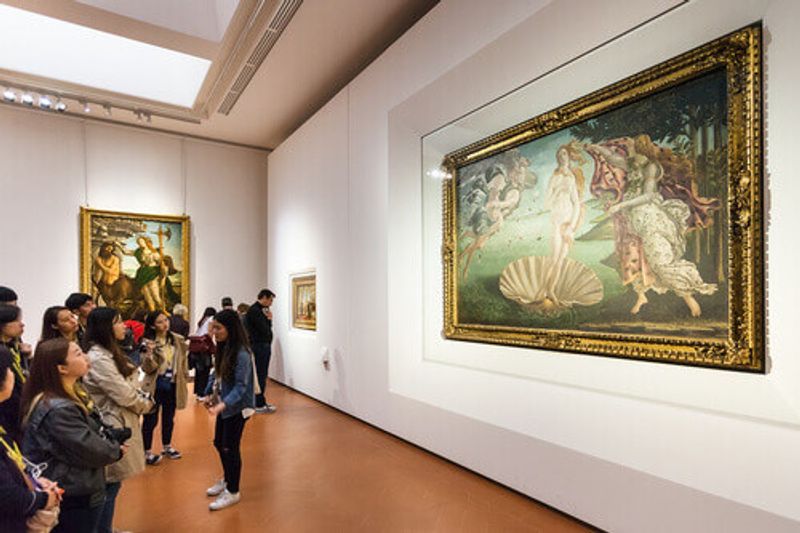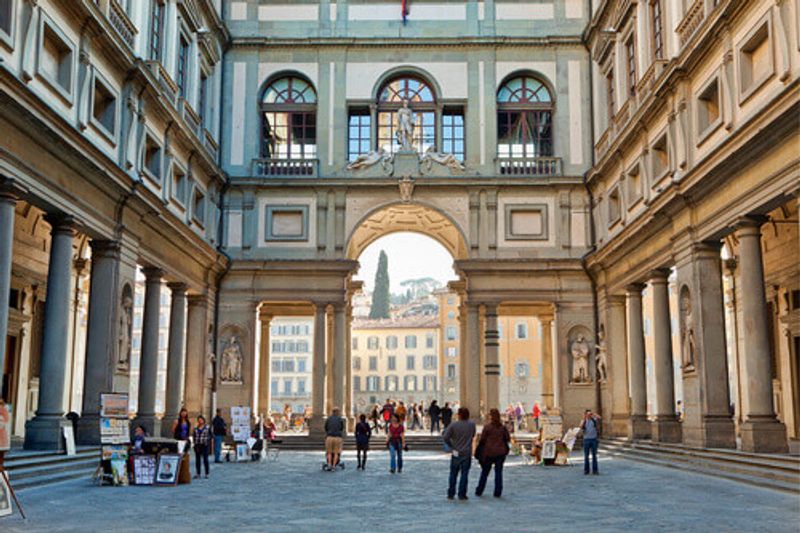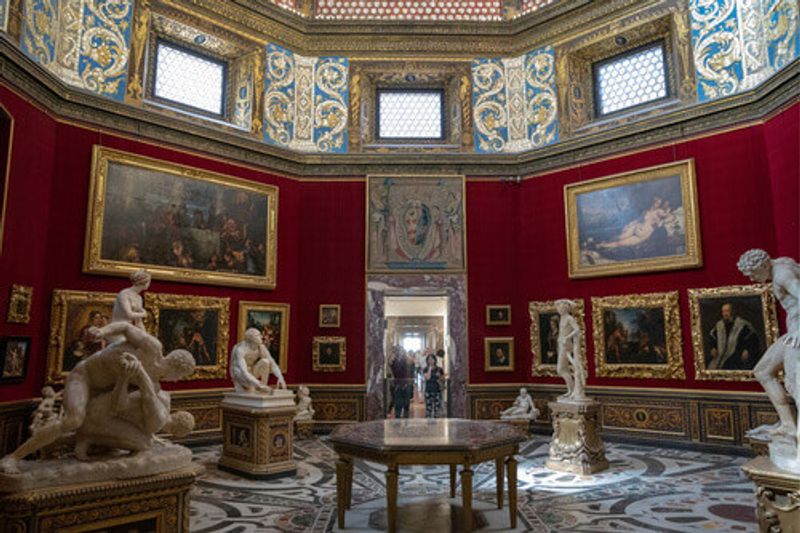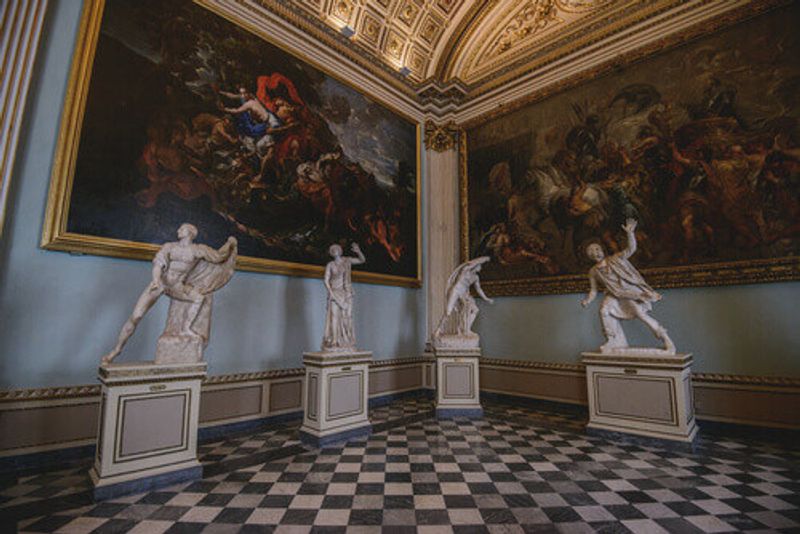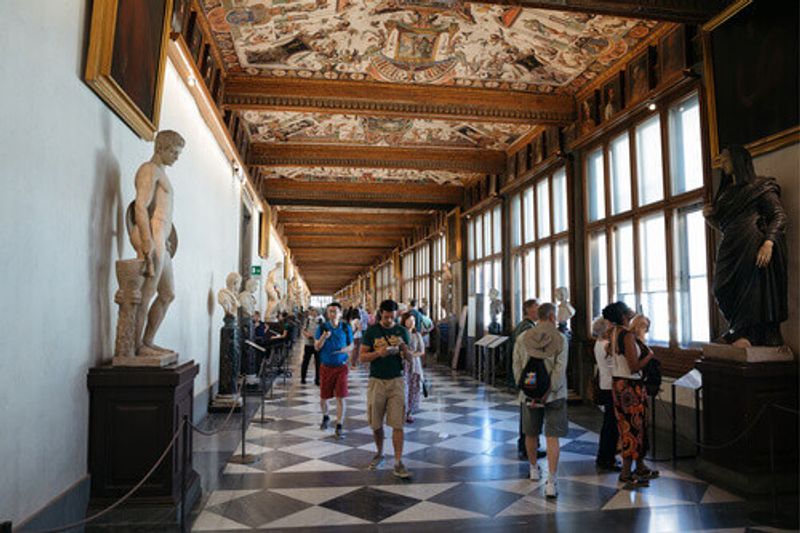A jewel in Florence’s crown, this stunning gallery is a bucket-list destination for art and history lovers
Built in the late 16th century, the legendary Uffizi Gallery is home to some of the world’s most iconic artworks, including Caravaggio’s Medusa and Botticelli’s The Birth of Venus.
The museum complex itself is an enormous work of staggering beauty, and houses one of the largest collections of art and cultural artifacts in the world (including the world’s largest collection Raphael's work) – you’ll find iconic works by Italian masters like Michelangelo, Titian, and Da Vinci, as well as continental counterparts such as Rembrandt, Dürer, and many more. Indeed, visiting the Uffizi for the first time can be overwhelming for an art fan as there is simply so much to see. Dedicated art lovers might need a second trip to be able to soak in as much as they can.
History of the Uffizi
The U-shaped building was first commissioned by the powerful Cosimo I de’Medici, Grand Duke of Tuscany, who wanted a governing complex of Florentine uffizi (offices) to accommodate the needs of his many court and judicial officials, merchants, guildmasters, and magistrates. The area where the Uffizi was built once contained an ancient Roman harbour, and was considered run-down and unsuitable for respectable Florentines, which all changed once construction began.
In the beginning, the Uffizi included a private art gallery or loggia for friends and family on the top floor, which held Medici’s extensive collection of Roman sculptures.
The architect in charge was Giorgio Vasiri, a favorite of de’Medici – the latter was known as an influential patron of the arts whose lavish commissions paved the way for much of Renaissance garden design. After Vasiri passed away in 1574, construction carried on under fellow architects Bernardo Buontalenti and Alfonso Parigi the Elder.
At the end of the Medicis’ influential reign, the Uffizi was repurposed as a private gallery to house their collections of art, with visitors permitted by appointment. This was the undertaking of the final Medici heir, Anna Maria Luisa de’Medici, who created the significant Family Pact of 1737 to ensure that the Medicis’ art remained in Florence even after the invading Austrian House of Lorraine took over; today, her portrait hangs in a place of prominence in the Uffizi. Years later, it officially became a public museum.
Chronological collections
The Uffizi has fifty halls organised in a (mostly) chronological order, which allows visitors to get a sense of how prominent western art styles evolved over the ages. As the Uffizi was never intended to be a museum, it’s easy to get lost in its corridors and wander at your leisure.
Attentive museum-goers can get a solid overview of art and sculpture development from Roman times to the International Gothic artists, early Renaissance (or proto-Renaissance works), the Renaissance itself, up to the Modern period. However, the museum does occasionally move things around, notably re-hanging Raphael and Michelangelo works together as recently as 2018 to encourage new dialogue around the art, as well as to juxtapose well-known masterworks alongside lesser-known pieces.
(Heads up – no camera photography is allowed, even without flash).
